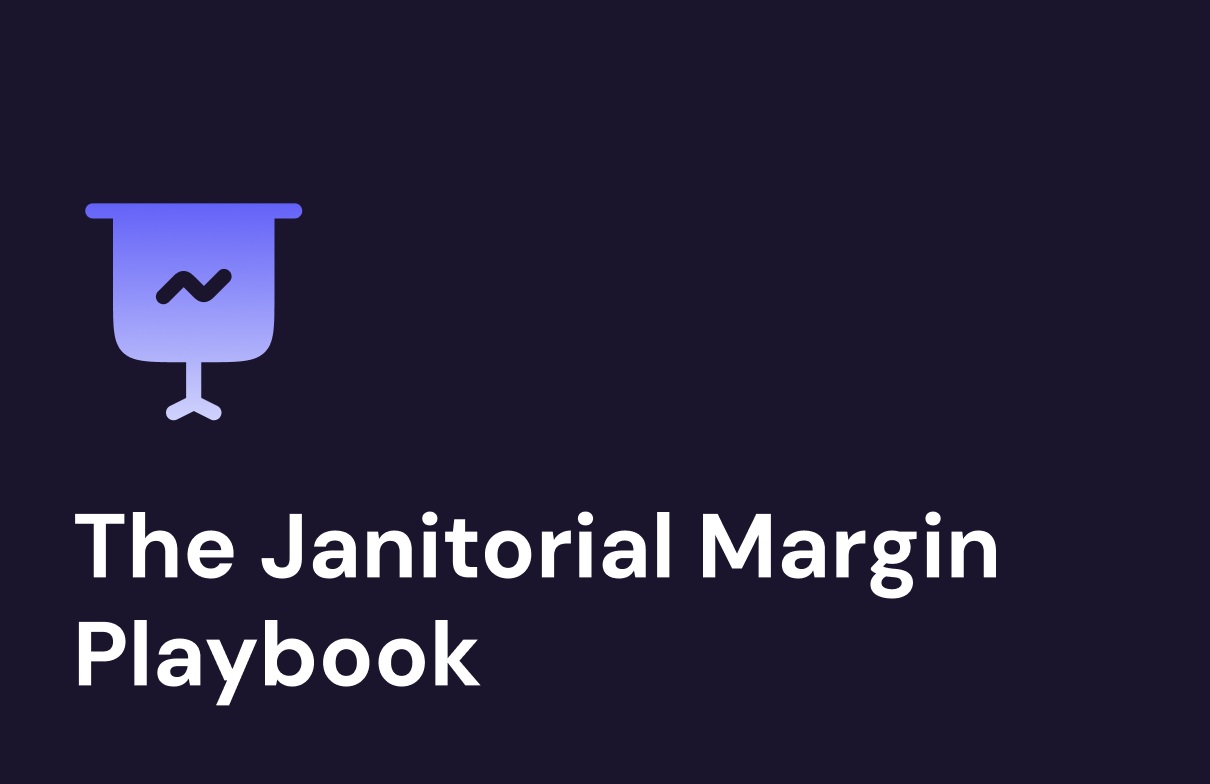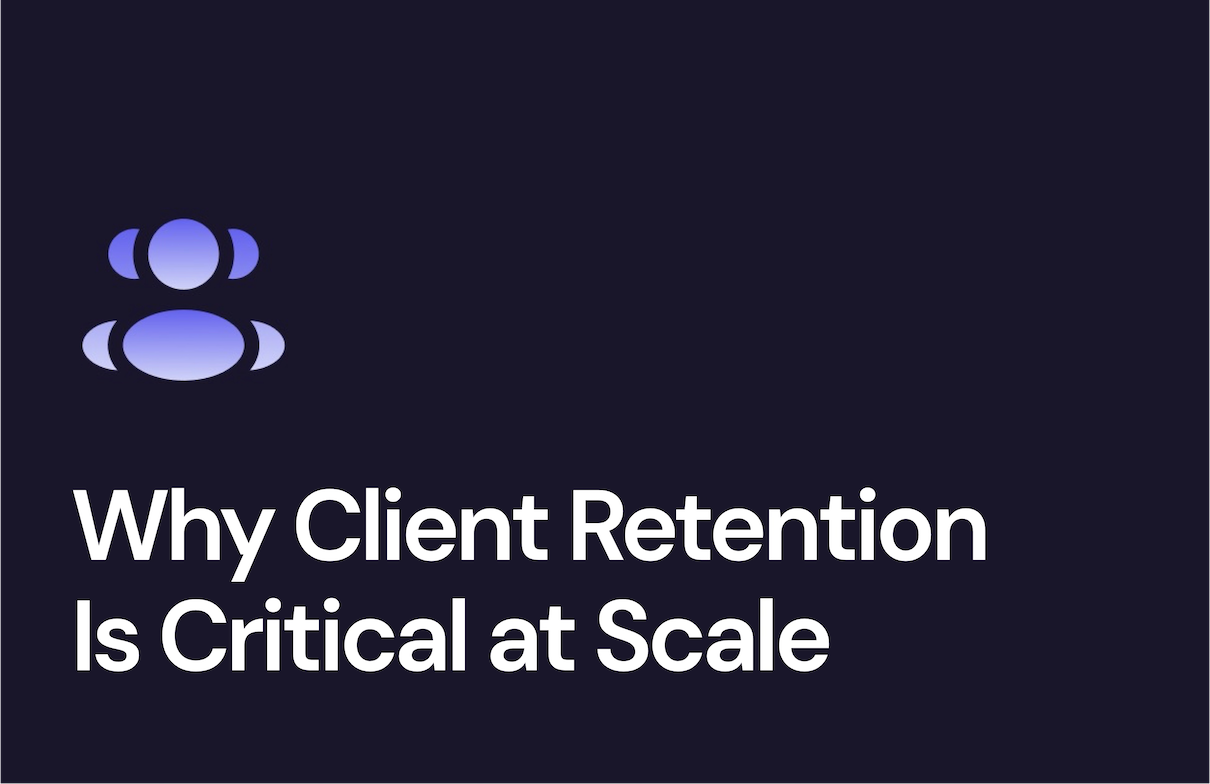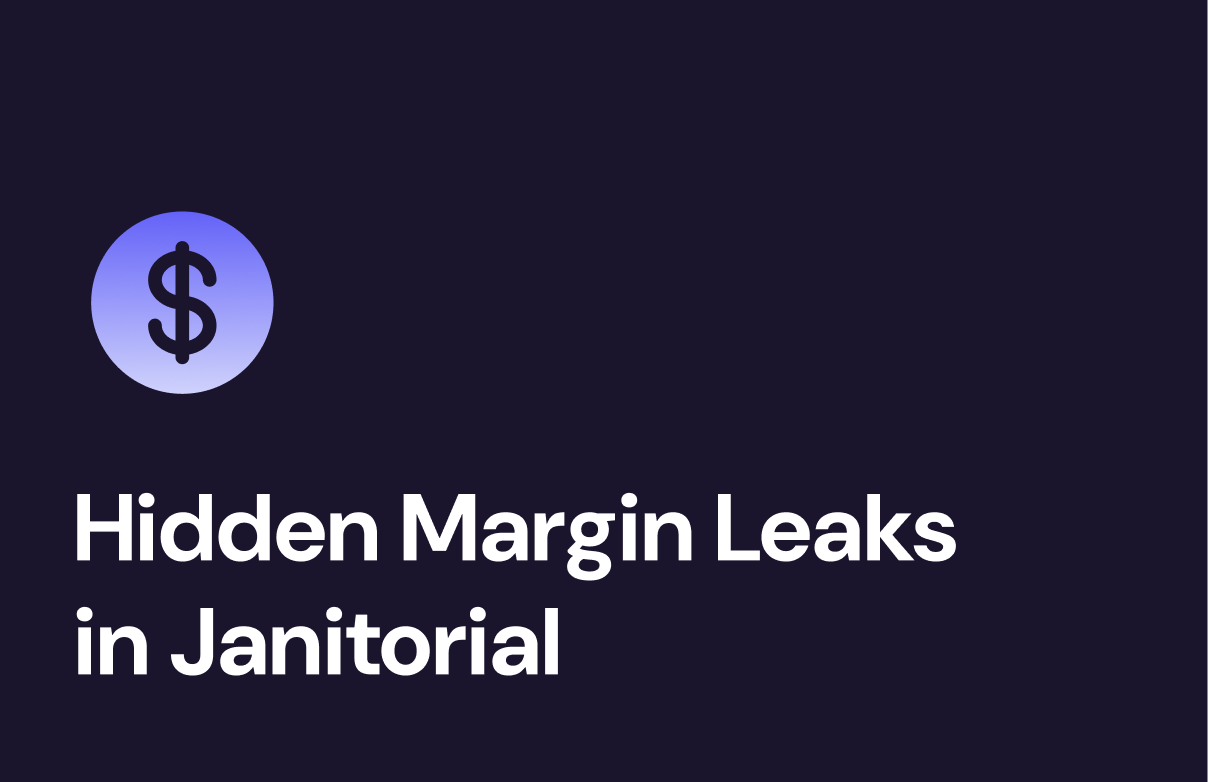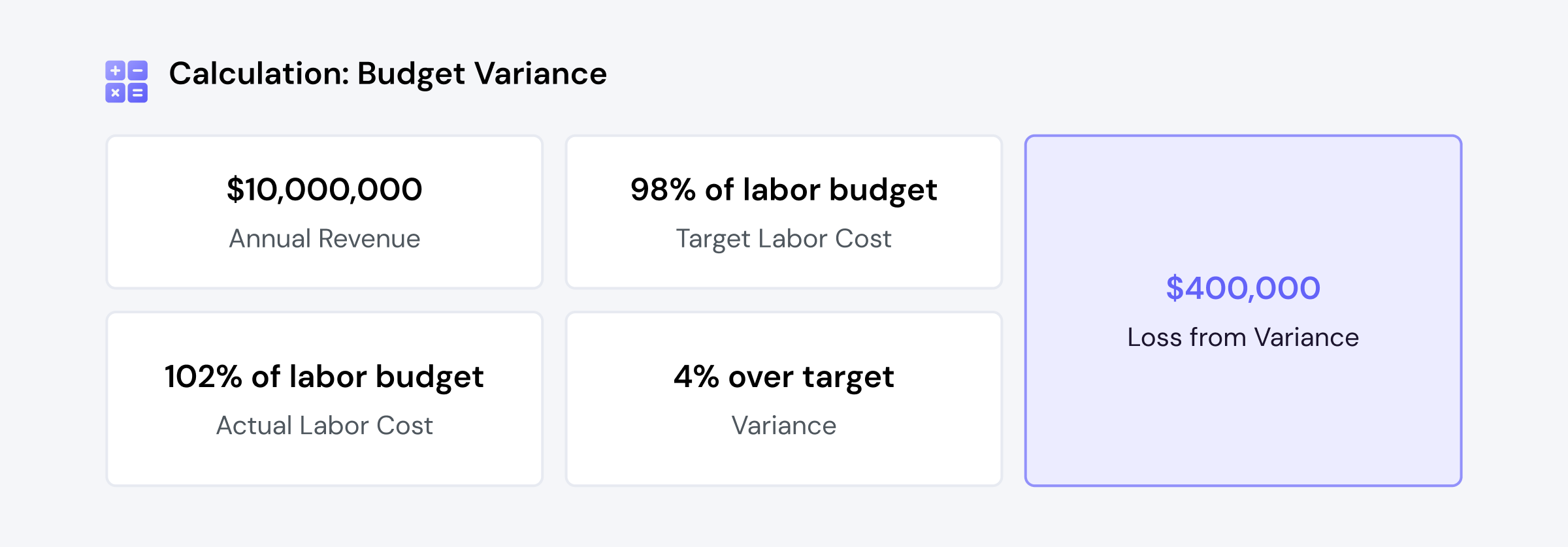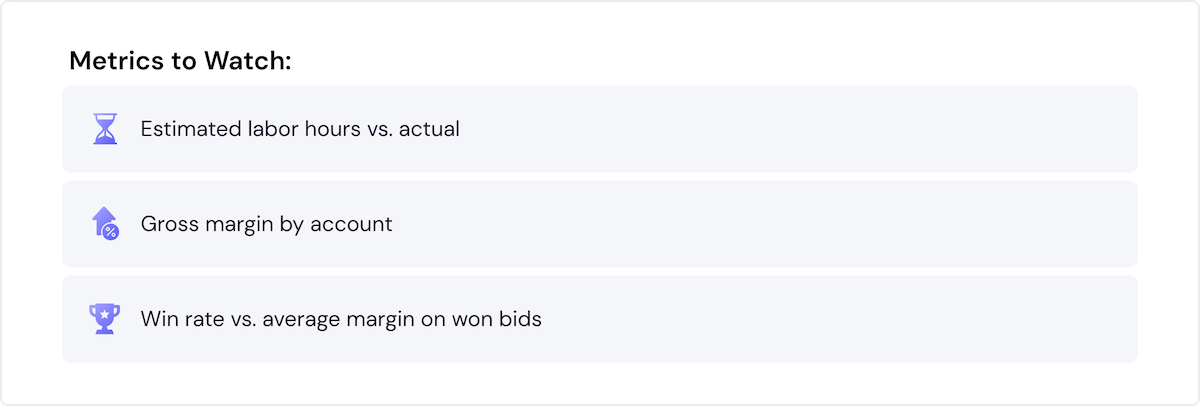From Metrics to Action: Building a Margin Management System | The Janitorial Margin Playbook
Part 6 of the Janitorial Margin Playbook Series – turning individual metrics into an actionable system that protects profitability and drives sustainable growth.
Over the past five articles, we've covered the metrics that matter most in janitorial: margins, time theft, overtime, budget discipline, and retention. But tracking metrics in isolation won't move the needle. The operators who win are the ones who connect these data points into a coherent system—one that catches problems early, assigns clear ownership, and makes course correction fast.
This final installment shows how to put it all together: from G&A discipline to real-time oversight, and how to use the consolidated playbook table as your roadmap.
The Missing Piece: G&A Discipline
Most margin discussions focus on labor, and for good reason. But there's another cost category that quietly erodes profitability as companies grow: General & Administrative overhead.
G&A includes office staff salaries, software subscriptions, facilities, insurance, and other indirect costs. Early on, these expenses are relatively small. As you scale however, they tend to balloon, often without a corresponding increase in efficiency.
The Paradox of Scale
Here's the irony: larger companies should have more control over G&A, not less. Economies of scale should kick in. Technology should automate manual tasks. Systems should streamline operations.
Yet many operators find the opposite happens. Headcount grows. Software stacks become redundant. Administrative layers multiply. Before long, G&A has climbed from 12% to 20% of revenue, erasing gains made elsewhere.
Measuring Administrative Efficiency
G&A as a percentage of revenue varies significantly by operational maturity and represents one of the key janitorial profitability benchmarks:

That 5-7 point spread can represent hundreds of thousands in annual profit for a mid-sized contractor.
Strategic Questions to Ask
Before adding another tool, hire, or process, ask:
- How many office staff do you have per $1M in revenue? Benchmark against peers to see if you're overstaffed.
- Are salaried staff regularly working paid overtime? If supervisors or managers are burning out, it's often a sign of poor systems, not insufficient headcount.
- Is your tech stack streamlining or complicating operations? Multiple disconnected tools create duplicate work and increase training costs.
Leveraging Technology to Reduce Costs
For years, janitorial was overlooked by tech companies, leaving operators stuck with clunky, legacy tools that required extensive training, or relying on products retrofitted from other categories. Today, there's a much wider range of modern, easy-to-use cleaning company software and janitorial workforce management software built specifically for the industry. Here's how top operators leverage these tools to keep overhead lean while improving visibility:
Consolidate systems. Janitorial software platforms with built-in, real-time reporting eliminate the need for manual data pulls and reduce dependency on administrative staff. The right janitorial workforce management software can replace multiple point solutions while improving visibility.
Streamline workflows. Look for opportunities to reduce manual tasks without sacrificing oversight. Janitorial time tracking software that works with your payroll system can cut processing time by hours each week.
Support supervisors with better tools. If supervisors are stretched thin, the answer isn't always more hires. Often, better tools or clearer processes can restore capacity and reduce burnout.
Use mobile clock-ins with geofencing to verify attendance and reduce time theft in janitorial industry operations.
Monitor real-time dashboards that highlight edited punches, overtime risks, and budget variances for immediate account margin analysis janitorial teams need.
Set up automated alerts when staff approach thresholds or jobs drift off budget, helping managers reduce janitorial overtime proactively.
Integrate payroll systems to streamline processing—whether through a platform that includes payroll, a direct integration with your provider, or seamless data exports.
Audit subscriptions and services. Many companies accumulate software they no longer use. An annual review can uncover thousands in wasted spend.
Technology doesn't replace good management, it amplifies it. The operators who win are the ones using janitorial time tracking software to make accountability seamless and decision-making faster.
Daily, Weekly, and Monthly Rhythms
Metrics can feel overwhelming, but you don't need to track everything constantly. Top operators focus on key metrics at different points throughout the week or month, building margin discipline into their regular routines:
Daily: Quick scan of scheduled vs. actual hours by site. Are accounts drifting off budget? Catch variances early before they snowball.
Midweek: Run a 30-hour report to flag employees approaching overtime thresholds, then reassign shifts to under-utilized staff. This simple practice is essential to reduce janitorial overtime before it impacts your bottom line.
Weekly: Review labor hours and wage costs against job budgets, factoring in staffing mix, minimum wage changes, and unexpected overtime. Effective account margin analysis helps identify which clients are profitable and which are draining resources.
Monthly: Measure net margin and compare against janitorial profitability benchmarks by company size and market. Break down labor into separate line items: cleaner wages, supervisors, overtime, and PTO.
This cadence turns margin management from a reactive scramble into proactive oversight.
The Consolidated Margin Playbook
Here's your quick-reference guide—a summary of the metrics, benchmarks, and actions covered throughout this series. Use it to identify where your company stands and where to focus next.
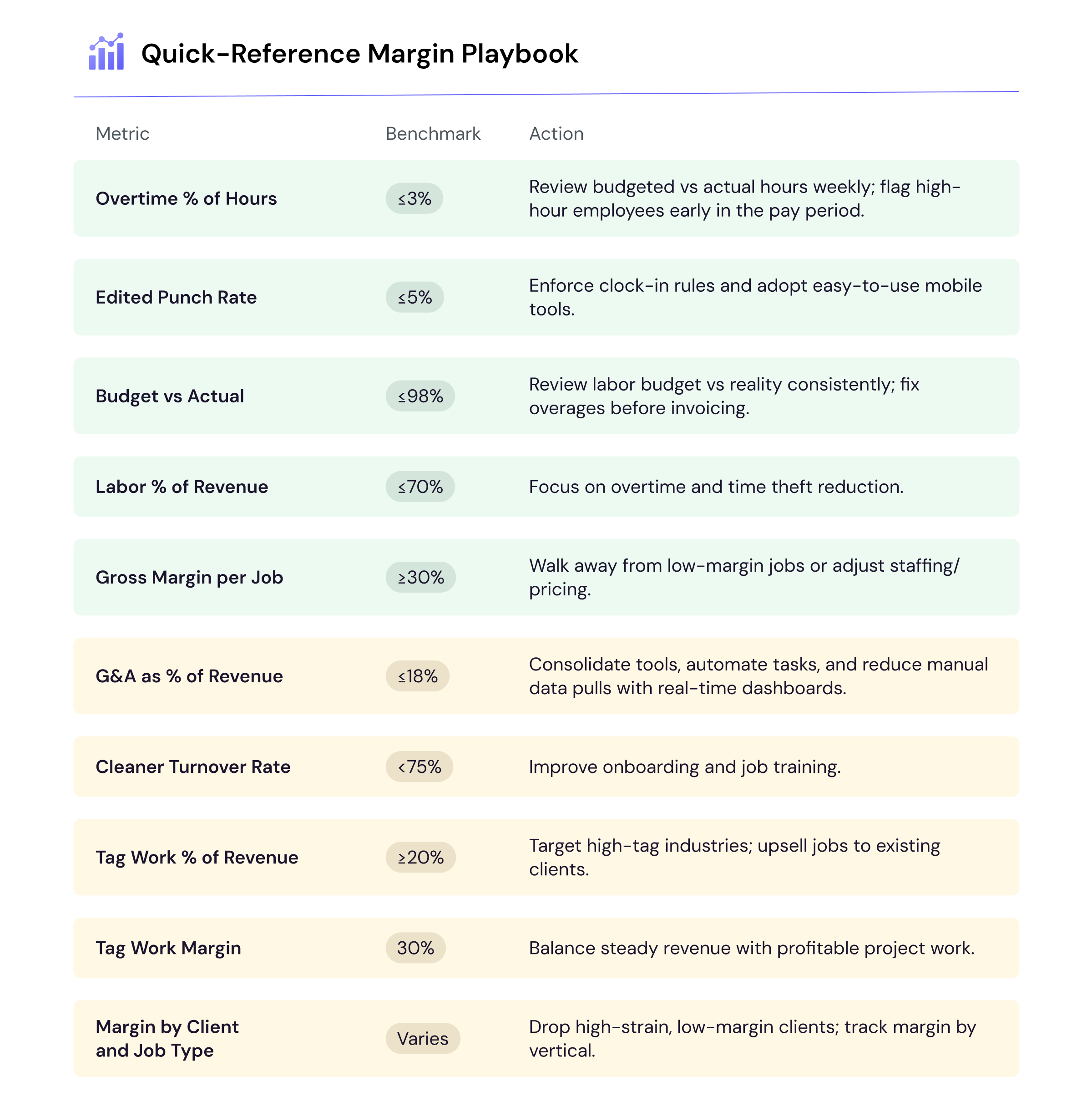
You don't need to fix everything at once. But you do need a system that helps you spot problems early and course-correct fast.
The Takeaway
Margins in janitorial are thin, but they don't have to be fragile. The companies that win aren't chasing every RFP or cutting corners for short-term gains. They're using data and janitorial profitability benchmarks to make informed tradeoffs, protect profitability, and build sustainable growth.
This series provides a roadmap: understand your margin, track the metrics that move it, and build systems that prevent leaks before they become losses. Whether you're implementing better janitorial time tracking, conducting regular account margin analysis, or working to reduce overtime, each improvement compounds to strengthen your bottom line.
Now it's time to act.
Revisit the Full Series:
- Part 1: Margins – The Most Important Metric. Why margins are the foundation of profitability and how to benchmark your performance.
- Part 2: Time Theft – The Hidden Drain on Profitability. How edited punches and missing accountability silently drain payroll and margins.
- Part 3: Overtime – Controlling the Cost Spiral. Why chronic overtime is one of the fastest ways profitability slips, and how proactive checks keep labor in line.
- Part 4: Budget vs Actual – The Hidden Margin Leaks. How over-budget jobs and low-margin accounts quietly erode profitability.
- Part 5: Why Client Retention Becomes Critical at Scale. How portfolio discipline protects long-term margins and why keeping the right accounts matters more than just adding new ones.
Want the full set of benchmarks and KPIs? Download the Janitorial Margin Playbook to see where your company stands and how to start closing margin gaps today.



